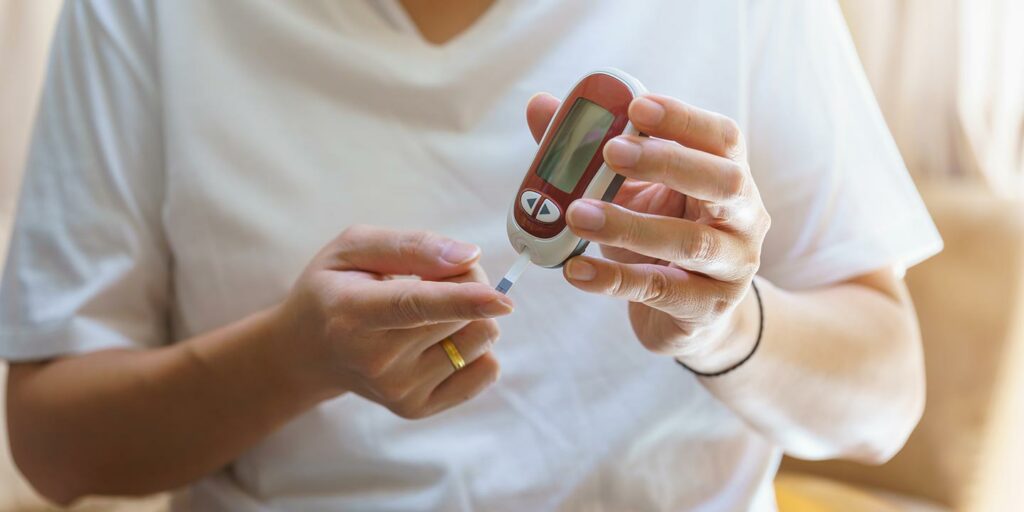Living with diabetes insipidus can be challenging, but with the right treatment and lifestyle adjustments, individuals can effectively manage their symptoms and improve their quality of life. In this blog, we will explore the various aspects of diabetes insipidus treatment, from medical interventions to practical tips for daily living. Whether you’re newly diagnosed or seeking additional information, this guide aims to empower you with the knowledge needed to navigate the complexities of diabetes insipidus.
Contents
Is Diabetes Insipidus A Serious Disease?
 Diabetes insipidus (DI) is a condition characterized by the inability of the kidneys to properly regulate fluid balance in the body. And leads to excessive thirst and urination. While it may not be as common or well-known as other forms of diabetes, such as type 1 or type 2, diabetes insipidus is indeed a serious disease that can significantly impact an individual’s daily life. The hallmark symptoms of uncontrolled DI, including extreme thirst and frequent urination, can result in dehydration, electrolyte imbalances, and overall fatigue.
Diabetes insipidus (DI) is a condition characterized by the inability of the kidneys to properly regulate fluid balance in the body. And leads to excessive thirst and urination. While it may not be as common or well-known as other forms of diabetes, such as type 1 or type 2, diabetes insipidus is indeed a serious disease that can significantly impact an individual’s daily life. The hallmark symptoms of uncontrolled DI, including extreme thirst and frequent urination, can result in dehydration, electrolyte imbalances, and overall fatigue.
If left untreated or inadequately managed, these complications can escalate, potentially leading to more severe health issues. The severity of diabetes insipidus underscores the importance of timely diagnosis and appropriate management. Fortunately, with the right medical interventions, such as medications like desmopressin and lifestyle adjustments, individuals with diabetes insipidus can lead relatively normal lives. Regular monitoring and adherence to treatment plans are crucial for preventing complications and maintaining overall health.
What Is The First Line Of Diabetes Insipidus Treatment?
The first line of treatment for diabetes insipidus typically involves the use of a synthetic hormone called desmopressin. Desmopressin, also known as DDAVP (1-deamino-8-D-arginine vasopressin), acts similarly to the antidiuretic hormone (ADH) produced naturally in the body. It helps the kidneys reabsorb water, reducing the excessive urine production characteristic of diabetes insipidus.
Desmopressin can be administered in various forms, including oral tablets, nasal sprays, or injections. The choice of administration depends on the individual’s specific needs and the severity of their condition. Regular monitoring of fluid balance, electrolyte levels, and response to treatment is crucial to ensure that the dosage is appropriate and adjusted as needed. While desmopressin is often effective in managing diabetes insipidus, healthcare professionals may consider other treatment options or address underlying causes in certain cases.
What Are Other Best Diabetes Insipidus Treatment?
In addition to desmopressin, several other diabetes insipidus treatment options may be considered, depending on the underlying cause and the individual’s response to therapy. Here are some additional treatments and considerations:
Treatment of Underlying Cause
The most effective approach to managing diabetes insipidus often involves addressing the underlying cause. If the condition is secondary to a tumor, cyst, or other abnormalities affecting the pituitary gland or hypothalamus, targeted treatments such as surgery or radiation therapy may be considered. Resolving the root cause can potentially alleviate or significantly improve diabetes insipidus symptoms.
Thiazide Diuretics
Thiazide diuretics, such as hydrochlorothiazide, are medications that promote water reabsorption in the kidneys, reducing urine production. While not a direct replacement for antidiuretic hormones like desmopressin, thiazides can be used in conjunction with desmopressin to enhance its effectiveness. These diuretics help manage symptoms by moderating the volume of urine produced, contributing to fluid balance.
Amiloride
Amiloride is a potassium-sparing diuretic that may be prescribed alongside other medications to help conserve potassium while reducing urine output. This is particularly important as excessive urination can lead to electrolyte imbalances, including potassium depletion. Amiloride helps mitigate this risk and contributes to maintaining a more stable electrolyte profile.
Adjustment of Fluid Intake
Careful monitoring and adjustment of fluid intake are essential components of diabetes insipidus management. Individuals may be advised to regulate their fluid consumption to prevent dehydration while avoiding excessive intake that might exacerbate symptoms. Striking the right balance is crucial for maintaining hydration without placing undue stress on the kidneys.
Regular Monitoring and Follow-Up
Continuous monitoring of fluid balance, electrolyte levels, and overall health is vital in the long-term management of diabetes insipidus. Regular follow-up appointments with healthcare professionals enable ongoing assessment of the treatment plan’s efficacy. Adjustments can be made based on the individual’s response to treatment and any changes in their health status. And will help to ensure optimal management and minimize potential complications. Regular communication between patients and healthcare providers is key to successful long-term management.
It’s important to note that the choice of treatment depends on the specific type and cause of diabetes insipidus, as well as individual factors. diabetes insipidus treatment decisions should be made in consultation with healthcare professionals. They can assess the individual’s medical history, symptoms, and overall health to tailor an effective and personalized treatment plan.
What Are Some Lifestyle Changes To Help?
 Lifestyle changes play a crucial role in diabetes insipidus treatment and improving overall well-being. Here are some lifestyle modifications that can help individuals with diabetes insipidus maintain better control of their symptoms:
Lifestyle changes play a crucial role in diabetes insipidus treatment and improving overall well-being. Here are some lifestyle modifications that can help individuals with diabetes insipidus maintain better control of their symptoms:
Hydration Management
Individuals with diabetes insipidus need to carefully manage their fluid intake to prevent dehydration while avoiding overhydration. Consistent monitoring of urine output, thirst levels, and overall fluid balance is essential. Some may find it helpful to spread their fluid consumption evenly throughout the day. And, making it easier to maintain hydration without overwhelming the kidneys.
Avoiding Triggers
Certain substances can act as diuretics, exacerbating symptoms of diabetes insipidus. Caffeine and alcohol, in particular, should be limited as they can increase urine production. Understanding personal triggers and making conscious choices to reduce or eliminate these substances from the diet can contribute to better symptom management.
Balanced Diet
Adopting a well-balanced diet is crucial for overall health. Including a variety of nutrient-rich foods such as fruits, vegetables, whole grains, and lean proteins provides essential vitamins and minerals. A balanced diet supports the body’s overall function. And, helping to maintain energy levels and support the kidneys in their role of fluid regulation.
Electrolyte Management
Electrolyte imbalances, especially a decrease in potassium levels, can be a concern in diabetes insipidus. Incorporating potassium-rich foods into the diet, such as bananas, oranges, potatoes, and leafy greens, can help maintain proper electrolyte balance. Regular monitoring of electrolyte levels through blood tests is also important.
Regular Exercise
Engaging in regular physical activity is beneficial for overall health and can enhance mood and well-being. However, individuals with diabetes insipidus should be mindful of fluid intake during exercise to prevent dehydration. Consultation with healthcare professionals can help establish a suitable exercise routine that balances physical activity with fluid needs.
Stress Reduction Techniques
Stress can impact hormone levels and potentially exacerbate symptoms of diabetes insipidus. Incorporating stress-reducing activities into daily life, such as meditation, deep breathing exercises, or yoga, can promote relaxation and contribute to overall well-being.
Educate Family and Friends
Building a support system is crucial for individuals with diabetes insipidus. Educating family members and close friends about the condition, its symptoms, and management strategies helps create understanding and empathy. A supportive network can make it easier to navigate challenges and adhere to treatment plans.
Regular Medical Check-ups
Regular check-ups with healthcare professionals are vital for monitoring overall health and assessing the effectiveness of the treatment plan. These appointments provide an opportunity to discuss any changes in symptoms, adjust medications if necessary, and address emerging concerns promptly.
Maintain a Daily Routine
Establishing a consistent daily routine can help individuals manage the challenges of diabetes insipidus. Regular mealtimes, consistent sleep patterns, and adherence to medication schedules create predictability, reducing stress and supporting overall well-being.
Stay Informed
 Actively seeking information about diabetes insipidus, staying updated on treatment options, and participating in educational opportunities can empower individuals to take control of their health. Being informed enables individuals to make educated decisions about their lifestyle, treatment choices, and overall self-care.
Actively seeking information about diabetes insipidus, staying updated on treatment options, and participating in educational opportunities can empower individuals to take control of their health. Being informed enables individuals to make educated decisions about their lifestyle, treatment choices, and overall self-care.
Individuals with diabetes insipidus need to work closely with their healthcare team to tailor lifestyle changes to their specific needs. Every person may respond differently to various strategies, and a personalized approach ensures the most effective management of the condition.
Conclusion
In conclusion, diabetes insipidus treatment involves a combination of medical treatments and practical lifestyle adjustments. By understanding the importance of proper hydration, avoiding triggers like caffeine and alcohol, and adopting a balanced diet, individuals can take proactive steps to improve their overall well-being. Regular exercise, stress reduction techniques, and maintaining a consistent daily routine contribute to a more stable and fulfilling life with diabetes insipidus.
Equally crucial is the support of family and friends, along with regular check-ups with healthcare professionals to ensure effective management and prompt adjustments to treatment plans when needed. Stay informed, stay connected, and work closely with your healthcare team to navigate the complexities of diabetes insipidus and lead a healthy, empowered life.
Do you want to get rid of diabetes? Join our online diabetes treatment program and reverse Diabetes naturally through lifestyle changes such as a Personalized Diet plan, Exercise, Yoga, dieticians, and health coaches.

